Introduction to Active JDBC
- Basant Hota
- Feb 22, 2018
- 3 min read
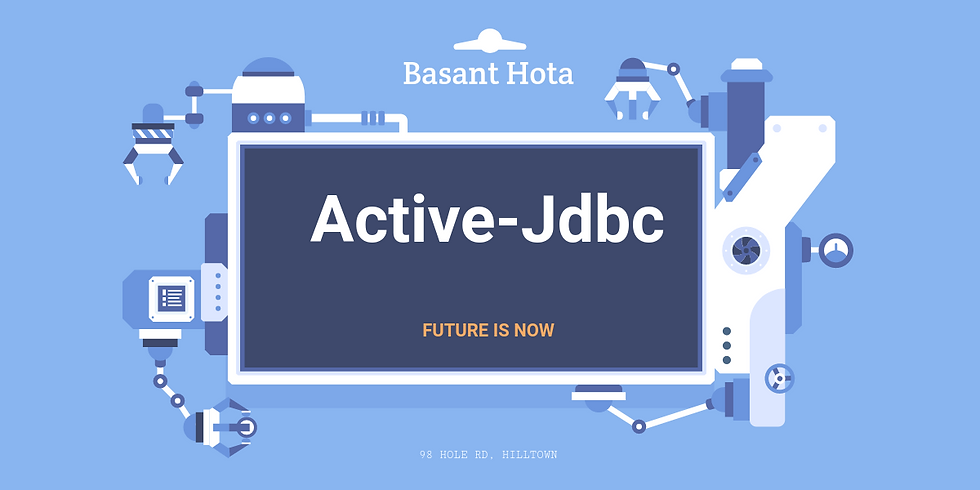
What is ActiveJDBC?
ActiveJDBC is a lightweight ORM and it focuses on simplifying the interaction with databases by removing the extra layer of typical persistence managers and focuses on the usage of SQL rather than creating a new query language.
Additionally, it provides its own way of writing unit tests for the database interaction through the DBSpec class.
Let’s see how this library differs from other popular Java ORMs and how to use it
1. It infers the DB schema parameters from a database, so that we no need to mapping entities to underlying tables
2. No session No DB component management and no need to learn new query language
3. No need to write model class in server side
4. This implementation provide us test database, once execution done it will auto clean the schema
Let’s go with some Pre-requisite and environment setup to work with Active JDBC
Setting up the Library
First we need to add ActiveJDBC dependency

Add ActiveJDBC Instrumentation plugin in pom.xml
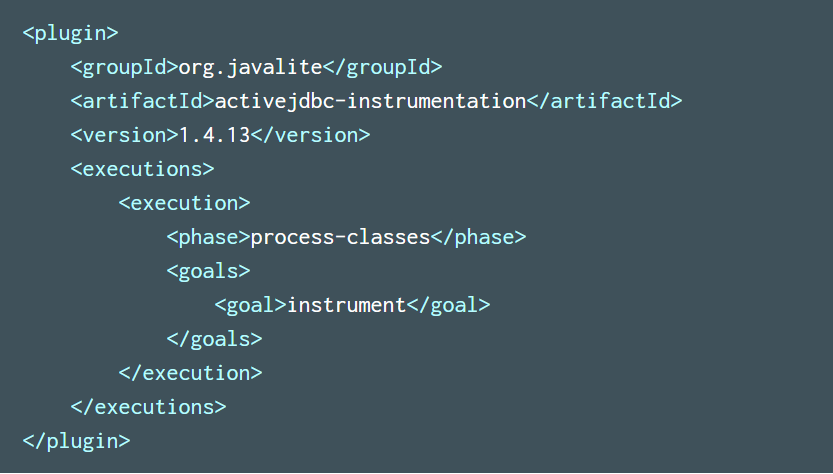
We should use latest version of ActiveJDBC i.e 2.0 version
What is the use of instrument plugin?
Instrumentation is byte code manipulation that happens after a compile phase. It adds static methods from super class to a subclass
Here super class is org.javalite.activejdbc.Model with which we are going to extends our Entity so that my Entity can achieve all features of javalite provided Model
Assume to fetch list of record based on condition we need to write SQL like below
Select * from Table where field=?
Same way using Active JDBC instrumentation we can directly invoke static method
like below
Assume my Entity class is Person
List<Person> retirees = Person.where ("age >=?", 65);
If you mark above syntax
Class Person Extends org.javalite.activejdbc.Model {}
So that using Person class we can call predefined static method like where() or order() etc. as Person inherited from org.javalite.activejdbc.Model
So we need to add this instrumentation plugin, without instrumentation, ActiveJDBC would not be able to know which class is being called, and as a result, what table to query
After add instrument plugin in pom.xml we need to run one build
mvn process-classes
mvn activejdbc-instrumentation: instrument
You can run any of one build, after build you will see in console that instrument start and end like below
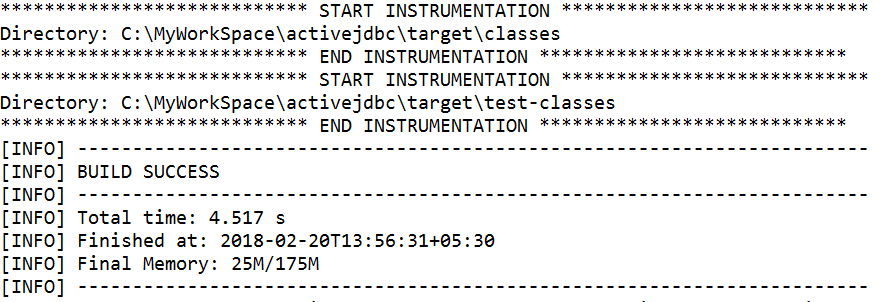
Now Getting started with small POC where we can find how to make DB connection and how we can do CRUD operation
Development:
Before develop application first we should create table manually as this ORM just abstraction above the JDBC implementation, where in JDBC we don’t have table auto creation features
Create Table:

Create Model:
Let’s create Entity/Model class now
We can create a simple model with just one line of code – it involves extending the Model class
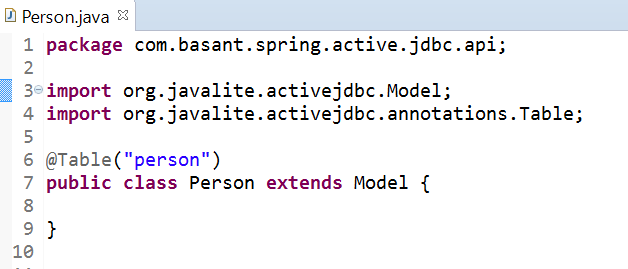
In Person Model class we no need to declare any attribute as we already defined attribute as a column while create Table
Connecting to a Database:
ActiveJDBC provided 2 class to connect with databases
Base
DB
Base:
If we are using one database then we should go for Base utility to create connection like below

Once it open the connection object is then attached to the current thread, and can be consumed by any ActiveJDBC API.
DB:
If we are using more than one database we should go for DB
Syntax to create connection

CRUD Operation(Create,Retrieve,Update,Delete)
1. Insert record:
Approach:1
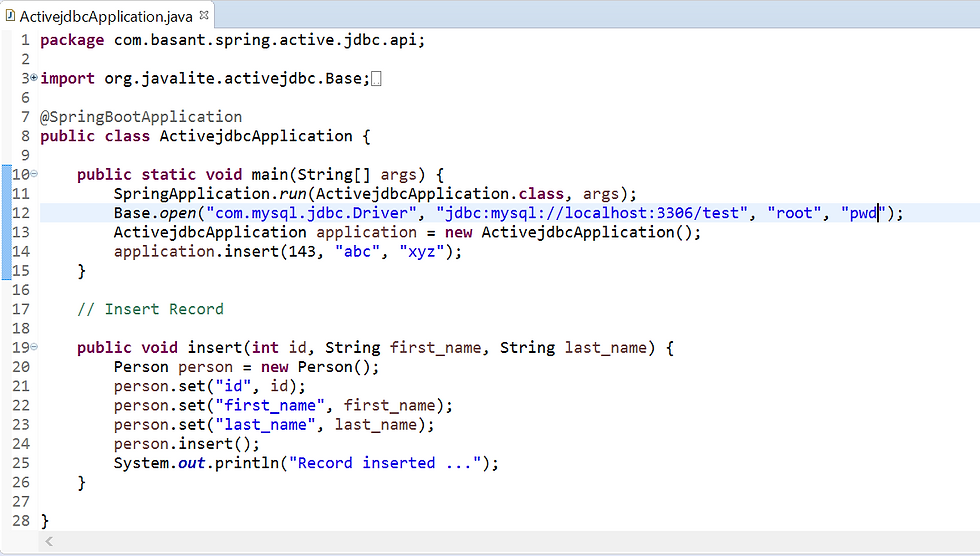
This is self-explanatory. Models are somewhat like maps. There are no setters or getters. You can still write them if you want
Approach: 2
The same logic can be written in one line as below

Database:

2. Fetching a Record:
-->Fetch single record based on last name

This line will find an instance of Person (conditionally), if one exists, or null if one does not exist
-->Fetch records based on condition using inbuilt where clause

-->Fetch all records

3. Update Record
Assume I want to update person last name based on id
Update Person set last_name=? where id=?
Steps:
1.First I need to get that Person object based on ID
2.Then on same Person object need to set the last name and then update Person Object like below

4. Delete Record
-->Delete record based on field

-->Delete all records

5. Pagination
Fetch list of record based on last_name and paginate it order by id

You can find source code on same from below link
Source Code: Download
Please visit below tutorial for better understand
Like and subscribe my channel : YouTube









Comments